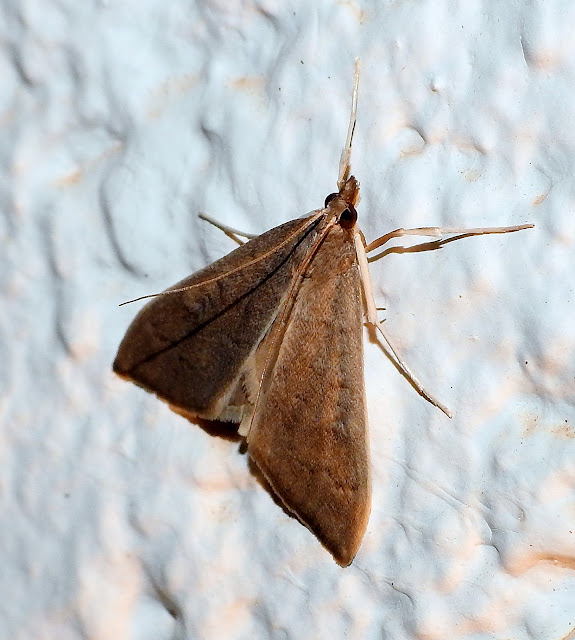This Blog contains Wildlife, Plants and Bird Photos from Walks, Safaris, Birding Trips and Vacations. Most of the pictures have been taken with my Nikon P900 and P950X cameras. Just click on any image for a larger picture. On the right column under the Blog Archive are the entries by date. Below that under Animal categories all the diffent species of Animals, Birds, Insects and Plants contained in the website are listed. Clicking on any entry will show all the entries for that species.
TOTAL PAGEVIEWS
TRANSLATE
Showing posts with label COASTAL PEARL MOTH (Mecyna asinalis). Show all posts
Showing posts with label COASTAL PEARL MOTH (Mecyna asinalis). Show all posts
Friday, 17 June 2022
Saturday, 7 May 2022
5-6-2022 MONTE CORONA, VALENCIA - COASTAL PEARL MOTH (Mecyna asinalis)
Mecyna asinalis, sometimes known as the madder pearl, is a species of moth of the family Crambidae found in Europe.
The wingspan is 25–29 millimetres (0.98–1.14 in). The forewings are grey; lines darker, first indistinct, sometimes followed by a dark fuscous triangular subdorsal spot, second sometimes blackish -dotted, curved, with a deep abrupt sinuation inwards below middle, often preceded by a brownish or dark fuscous trapezoidal subdorsal spot ; very large orbicular, and reniform discal spot somewhat paler, latter preceded and followed by faint brownish sometimes dark-edged spots. Hind are wings grey ; a darker postmedian line. The larva is yellow-brownish ; dorsal line reddish-brown ; subdorsal broader, brown ; lateral brown ; spots black.
The moth flies from May to October in two generations per year.
It is found in west and southern Europe, including Ireland, Britain, the Iberian Peninsula, France, Germany, Switzerland, Italy, Albania, Croatia, Greece and Sicily, Sardinia, Malta, Madeira, Corsica, the Azores and the Canary Islands.
Tuesday, 27 July 2021
Tuesday, 9 June 2020
Thursday, 4 June 2020
3-6-2020 MONTE CORONA, VALENCIA - COASTAL PEARL MOTH (Mecyna asinalis)
Mecyna asinalis, sometimes known as the madder pearl, is a species of moth of the family Crambidae found in Europe.
The wingspan is 25–29 millimetres (0.98–1.14 in). The forewings are grey; lines darker, first indistinct, sometimes followed by a dark fuscous triangular subdorsal spot, second sometimes blackish -dotted, curved, with a deep abrupt sinuation inwards below middle, often preceded by a brownish or dark fuscous trapezoidal subdorsal spot ; very large orbicular, and reniform discal spot somewhat paler, latter preceded and followed by faint brownish sometimes dark-edged spots. Hind are wings grey ; a darker postmedian line. The larva is yellow-brownish ; dorsal line reddish-brown ; subdorsal broader, brown ; lateral brown ; spots black.
The moth flies from May to October in two generations per year.
It is found in west and southern Europe, including Ireland, Britain, the Iberian Peninsula, France, Germany, Switzerland, Italy, Albania, Croatia, Greece and Sicily, Sardinia, Malta, Madeira, Corsica, the Azores and the Canary Islands.
Subscribe to:
Comments (Atom)






